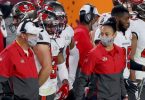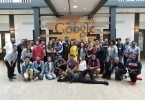How do we feed 9.7 billion people in 2050?

ABSfreePix
Nano particles may be the answer. Rock Phosphorus, which could be depleted in 80 years, is essential to plant food growth, but it also pollutes water sources.
Physic.org reports that environmental and chemical engineers at Washington University in St. Louis have devised a way to reduce phosphorus fertilizer use.
They create “zinc oxide nanoparticles from a fungus around the [mung bean] plant’s root.” Then apply the native phosphorus nanoparticles to the plant reducing pollution and potentially raising harvests.
Residents of China, southeast Asia, and India, with fast growing populations, are heavy consumers of mung beans.
STEMRules.com tip: The U.S. Bureau of Labor Statistics projects that demand for Chemical Engineers will grow an average 2 percent by 2024. Median pay for those jobs in 2015 was $97,000. Entry-level education is a bachelor’s degree.
Tags: engineering, chemical Engineering, food, nutrition






